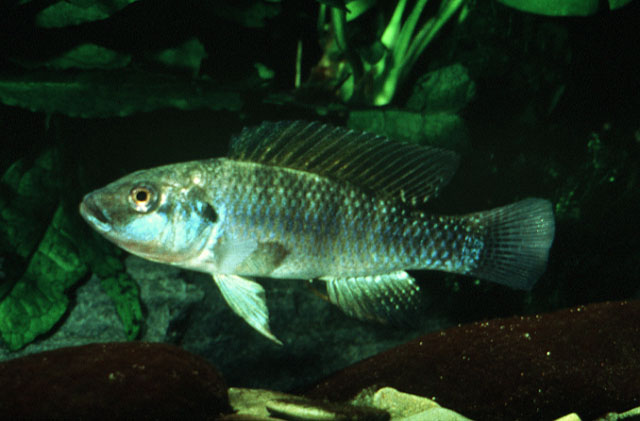| Cichlidae (Cichlids), subfamily: Pseudocrenilabrinae |
| 20 cm SL (male/unsexed) |
|
benthopelagic; freshwater; pH range: 7.5 - 8.5; dH range: 10 - 20, |
| Africa: Lake Magadi in Kenya (Ref. 52331). Introduced in Lake Nakuru and Lake Elmenteita, both in Kenya (Ref. 52331). Reported as introduced to Lake Natron in Tanzania (Ref. 13364), but there is currently no evidence that any introduction led to establishment of breeding populations (Ref. 118638). |
|
Dorsal spines (total): 11-13; Dorsal soft rays (total): 12-13; Anal spines: 3-3; Anal soft rays: 9-11; Vertebrae: 28. Mature females with an overall golden hue; males with the flanks a pale blue. Swollen and brilliant white lateral parts of the lower lip of the mature male. Blue spots on scales becoming iridescent. Genital papilla conical, prominent and yellow in the mature male; swollen in the mature female. An oblique eye-bar intensely black in the breeding male, duller in the female. |
| Occur at temperatures ranging from 16.0-40.0 °C (Ref. 2). Feed actively in the evening. Young O. alcalicus grahami eat eggs as they are shed by the female, and much of the time and energy of the territorial male is occupied in driving them off. Feed on invertebrates, at the surface (Ref. 2). |
|
Endangered (EN); Date assessed: 16 June 2022 (B1ab(i,ii,iii)) Ref. (130435)
|
| harmless |
Source and more info: www.fishbase.org. For personal, classroom, and other internal use only. Not for publication.

